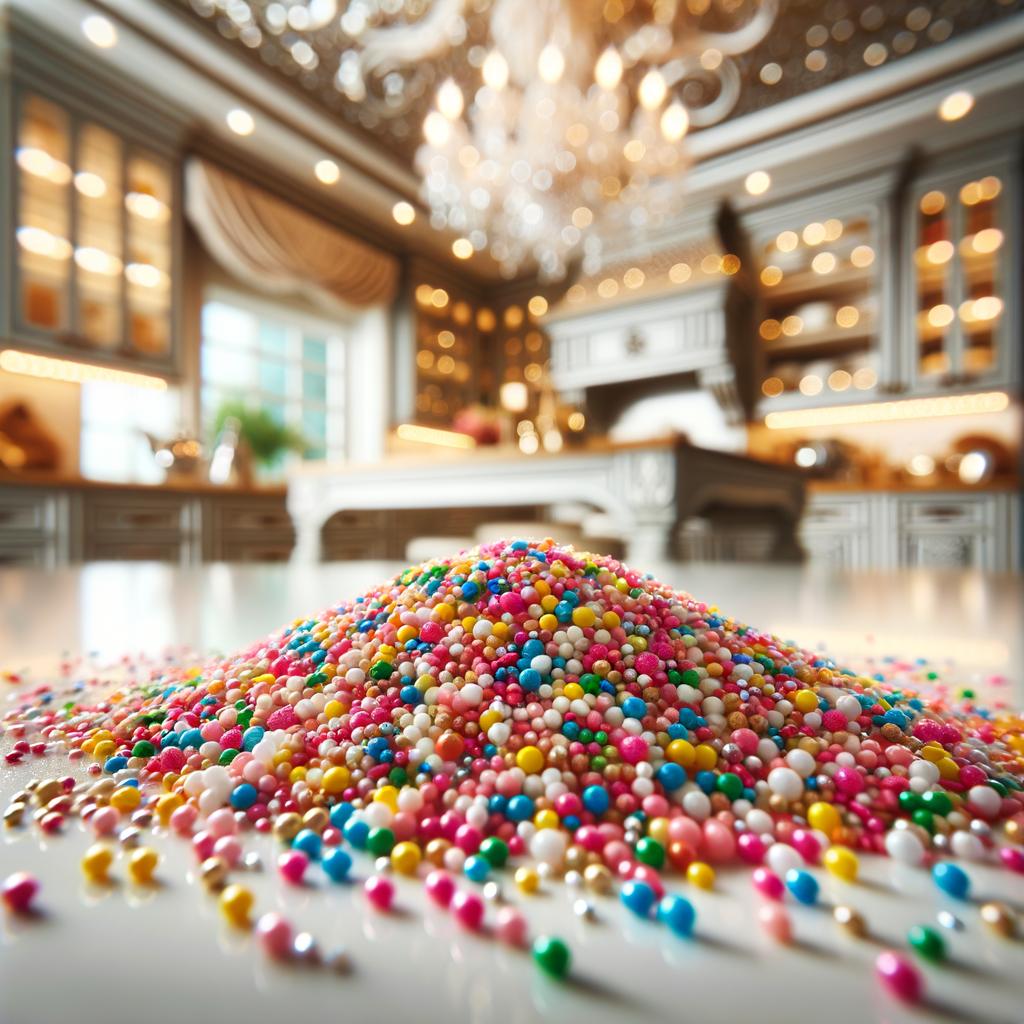Sprinkles or Edible Glitter

Description
Sprinkles, also known as edible glitter, are tiny pieces of confectionery used to decorate desserts. They come in a kaleidoscope of colors, from the soft pastels of spring to the vibrant hues of a summer carnival. Each sprinkle is a tiny, hard cylinder, though some may be shaped like stars, hearts, or other whimsical shapes. Their texture is crunchy, adding a delightful contrast to soft, sweet desserts. As for their flavor, it is predominantly sweet, though some varieties offer a hint of vanilla. What truly sets sprinkles apart is their ability to transform a simple dessert into a vibrant, festive masterpiece.
Primary Uses
Sprinkles are a beloved ingredient in the world of baking and dessert making. They are commonly used to add color and texture to cupcakes, cookies, cakes, ice cream, and even some breakfast foods like pancakes and doughnuts. Additionally, sprinkles are a key component in certain dishes like fairy bread, a popular Australian treat made with buttered bread and sprinkles. Beyond their culinary uses, sprinkles also hold cultural significance. In the Netherlands, for instance, it is a tradition to eat bread with butter and sprinkles, known as 'hagelslag', for breakfast.
History
The history of sprinkles is as colorful as the product itself. They are believed to have originated in the 18th century in France, but it was an American named Samuel Guttenberg who popularized them in the 1930s. He invented a machine that could produce sprinkles en masse, forever changing the world of baking. Over the years, sprinkles have evolved from simple sugar crystals to the diverse range of shapes, sizes, and colors we see today. They are associated with celebration and joy, often used to adorn birthday cakes or festive cookies.
Nutritional Information
While sprinkles are not typically consumed for their nutritional value, they do contain small amounts of certain nutrients. They contain trace amounts of fats and proteins, and are primarily composed of carbohydrates, specifically sugar. Some sprinkles may also contain artificial colors and flavors. Compared to similar ingredients like colored sugar, they offer a similar nutritional profile. However, they are typically used in such small quantities that their nutritional impact is minimal. As with all sweets, they should be consumed in moderation. Despite their lack of substantial nutritional value, the joy and festivity they bring to food can certainly contribute to one's emotional well-being.

